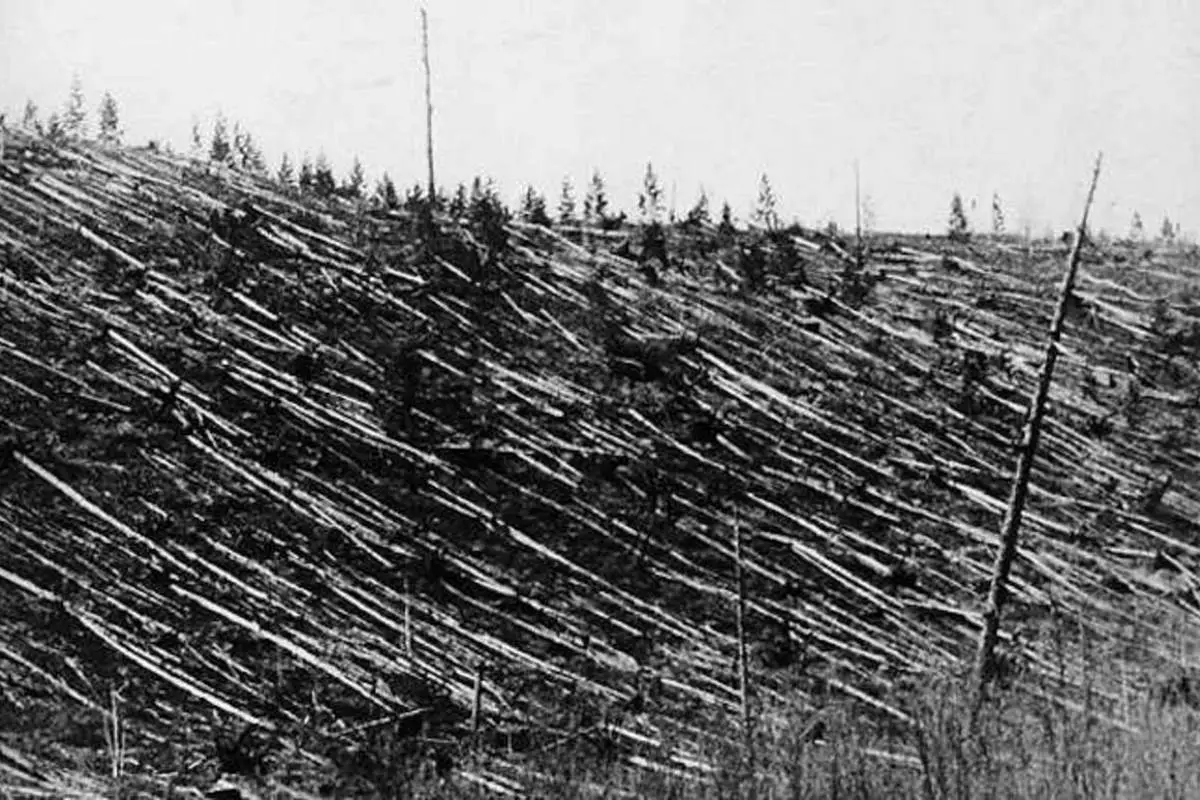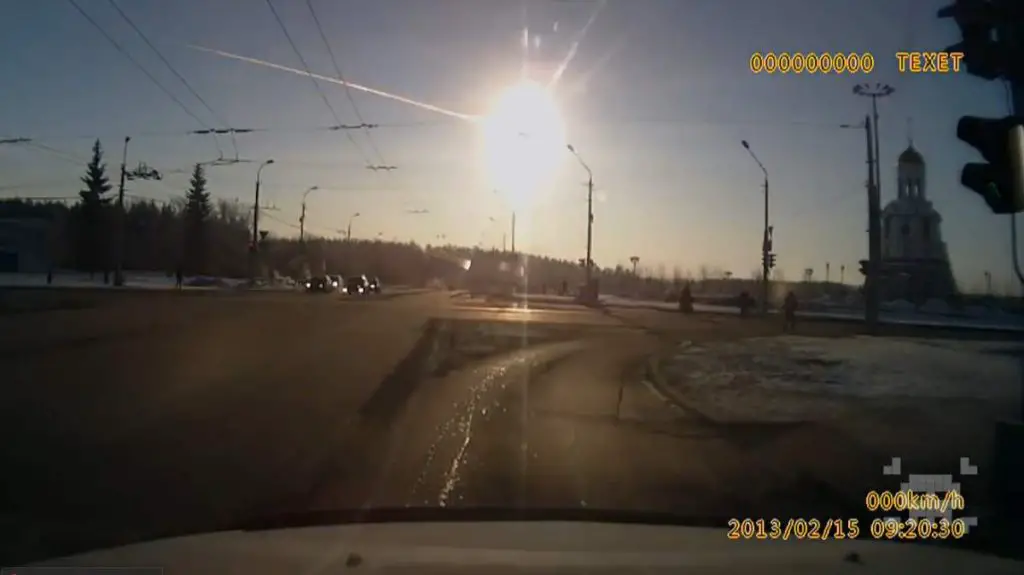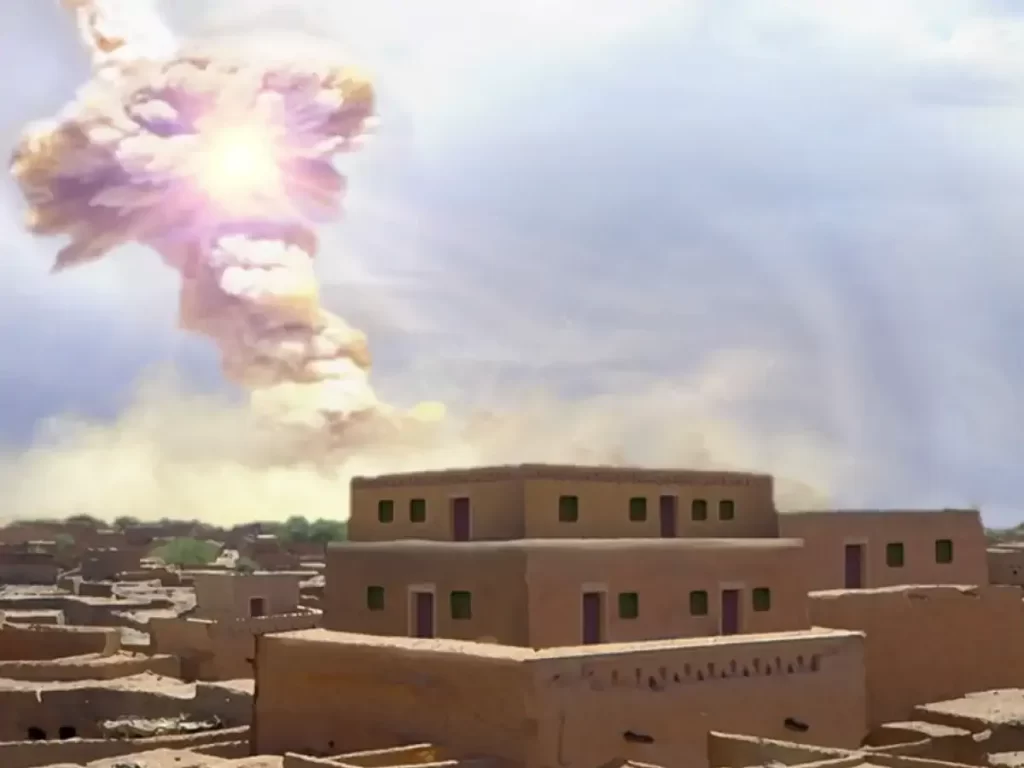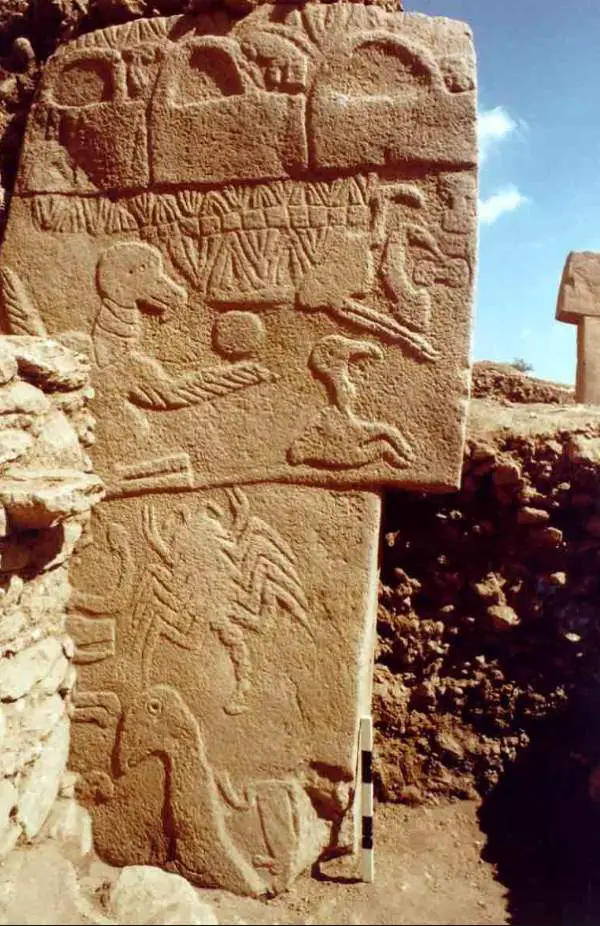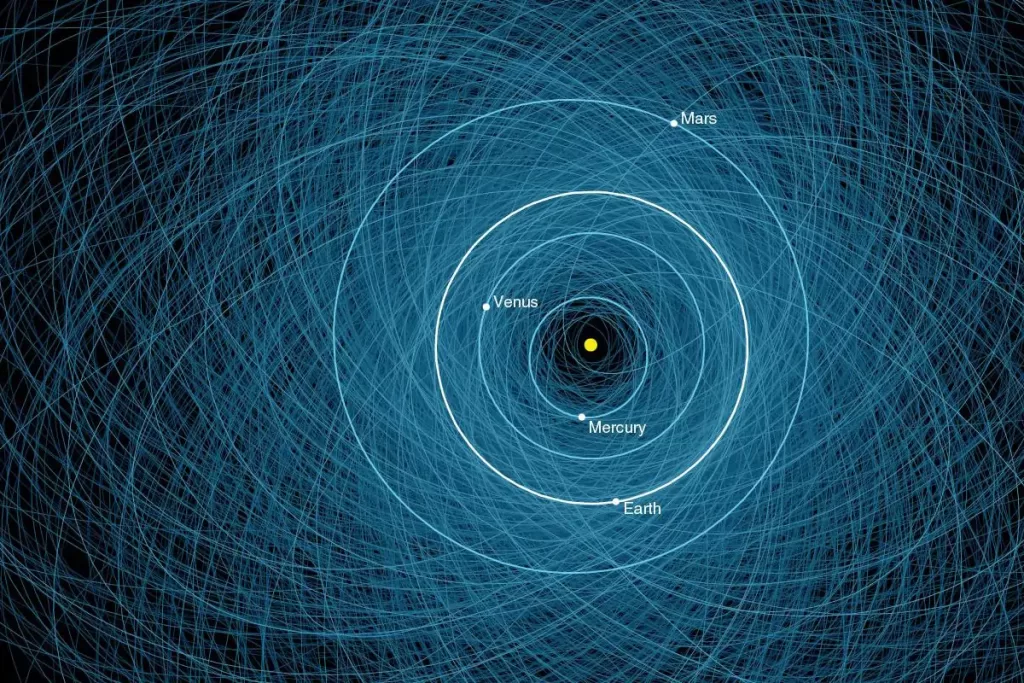On June 30, 1908, at about 7:14 A.M., around the Tunguska River, a gigantic fireball devastated hundreds of square kilometers of uninhabited Siberian forest. It was about a ~12 megaton explosion, which means the blast was around 800 times more powerful than the Hiroshima atomic bomb.
Today’s (June 30) story of what happened this day in Science, Technology, Astronomy, and Space Exploration history.
Tunguska impact
On the morning of June 30, 1908, S. Semenov was sitting on the front porch of a trading post at Vanavara, a rural locality in Siberia. Little did he know, in a few moments, he would be hurled from his chair and the heat would be so intense he would feel as though his shirt is on fire.
That’s how the Tunguska event felt 40 miles (65 km) from ground zero.
At the time, nobody knew what happened. The location was so remote, so there were few eyewitnesses. Plus, the first scientific expedition to the area would have to wait for 19 years, perhaps because of a lack of resources.
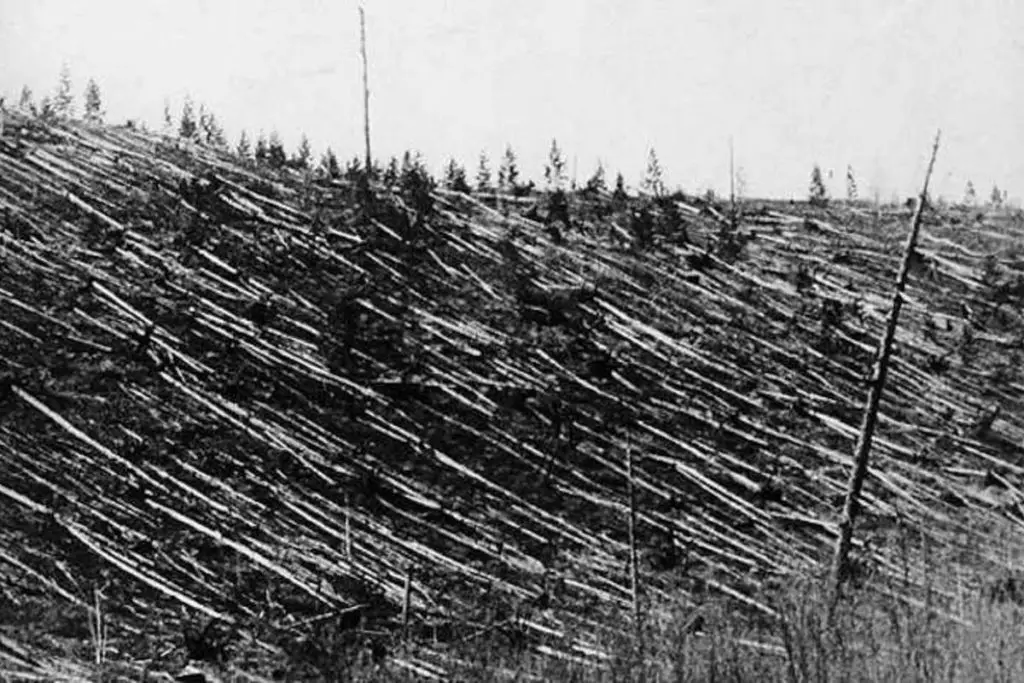
Tunguska event: a meteorite impact
Today, we know that the Tunguska explosion was caused by the atmospheric explosion of a stony meteoroid about 50-60 meters (160-200 feet) in size.
Despite the meteoroid’s body didn’t hit the Earth (thus no impact crater was created), it is still classified as a “meteorite impact”. The meteoroid approached from the east-southeast, and likely with a relatively high speed of about 27 kilometers per second (60,000 mph) (~Ma 80, or 80 times the speed of sound). The “impactor” is thought to have disintegrated and exploded at an altitude of 5 to 10 kilometers (3 to 6 miles) rather than to have hit the surface of the Earth.
An explosion of this magnitude would be capable of destroying a large metropolitan area.
The largest meteorite impact in recorded history
The Tunguska impact is the largest meteorite impact in recorded history. Former manager of the Near-Earth Object Office at NASA’s Jet Propulsion Laboratory, Don Yeomans says “If you want to start a conversation with anyone in the asteroid business all you have to say is Tunguska. It is the only entry of a large meteoroid we have in the modern era with first-hand accounts.”
How often do Tunguska-like events happen?
On February 15, 2013, a smaller but still impressive meteor burst into the atmosphere near Chelyabinsk, Russia. That event has provided new evidence to help solve the mystery of Tunguska. This highly documented Chelyabinsk fireball created an opportunity for researchers to apply modern computer modeling techniques to explain what was seen, heard, and felt during the Tunguska event.
The models were used with video observations of the fireball and maps of the damage on the ground to reconstruct the original size, motion, and speed of the Chelyabinsk object. The resulting interpretation is that Chelyabinsk was most likely a stony asteroid about 19 meters (62 feet) in size (about the size of a five-story building) that broke apart 15 miles above the ground. This generated a shock wave equivalent to a 550-kiloton explosion (about 35 times more powerful than the Hiroshima atomic bomb).
The explosion’s shockwave blew out roughly a million windows and injured more than a thousand people. Fortunately, the force of the explosion was not enough to knock down trees or structures. Per current understanding of the asteroid population, an object like the Chelyabinsk meteor can impact the Earth every 10 to 100 years on average.
The data also showed that the average frequency of Tunguska-like meteorite impacts (or in other words, asteroidal collisions) ranges from one in 200 years to one in 1,000 years. Thus, it is not unlikely that a similar strike could occur during our lifetimes.
Selected eyewitness reports of the Tunguska Event
The testimony of S. Semenov (mentioned above), as recorded by Russian mineralogist Leonid Kulik’s (19 August 1883 – 14 or 24 April 1942) expedition in 1930:
“At breakfast time I was sitting by the house at Vanavara Trading Post [approximately 65 kilometers (40 mi) south of the explosion], facing north. […] I suddenly saw that directly to the north, over Onkoul’s Tunguska Road, the sky split in two and fire appeared high and wide over the forest [as Semenov showed, about 50 degrees up-expedition note]. The split in the sky grew larger, and the entire northern side was covered with fire.”
“At that moment I became so hot that I couldn’t bear it as if my shirt was on fire; from the northern side, where the fire was, came strong heat. I wanted to tear off my shirt and throw it down, but then the sky shut closed, and a strong thump sounded, and I was thrown a few meters. I lost my senses for a moment, but then my wife ran out and led me to the house. After that such noise came, as if rocks were falling or cannons were firing, the Earth shook, and when I was on the ground, I pressed my head down, fearing rocks would smash it.”
“When the sky opened up, hot wind raced between the houses, like from cannons, which left traces in the ground like pathways, and it damaged some crops. Later we saw that many windows were shattered, and in the barn, a part of the iron lock snapped.”
The testimony of Chuchan of the Shanyagir tribe, as recorded by I. M. Suslov in 1926:
“We had a hut by the river with my brother Chekaren. We were sleeping. Suddenly we both woke up at the same time. Somebody shoved us. We heard whistling and felt strong wind. Chekaren said, ‘Can you hear all those birds flying overhead?’ We were both in the hut, and couldn’t see what was going on outside. Suddenly, I got shoved again, this time so hard I fell into the fire.”
“I got scared. Chekaren got scared too. We started crying out for our father, mother, and brother, but no one answered. There was noise beyond the hut, we could hear trees falling down. Chekaren and I got out of our sleeping bags and wanted to run out, but then the thunder struck. This was the first thunder. The Earth began to move and rock, the wind hit our hut and knocked it over.”
“My body was pushed down by sticks, but my head was in the clear. Then I saw a wonder: trees were falling, the branches were on fire, it became mighty bright, how can I say this, as if there was a second sun, my eyes were hurting, I even closed them. It was like what the Russians call lightning. And immediately there was a loud thunderclap. This was the second thunder.”
“The morning was sunny, there were no clouds, our Sun was shining brightly as usual, and suddenly there came a second one!”
“Chekaren and I had some difficulty getting out from under the remains of our hut. Then we saw that above, but in a different place, there was another flash, and loud thunder came. This was the third thunder strike. The wind came again, knocked us off our feet, and struck the fallen trees.”
“We looked at the fallen trees, watched the tree tops get snapped off, and watched the fires. Suddenly Chekaren yelled “Look up” and pointed with his hand. I looked there and saw another flash, and it made another thunder. But the noise was less than before. This was the fourth strike, like normal thunder.”
“Now I remember well there was also one more thunder strike, but it was small, and somewhere far away, where the Sun goes to sleep.”
Sibir newspaper, July 2, 1908:
“On the morning of the 17th of June (Gregorian calendar), around 9:00, we observed an unusual natural occurrence. In the north Karelinski village (200 versts or 213 km / 132 miles north of Kirensk, a town and the administrative center of Kirensky District in Irkutsk Oblast, Russia) the peasants saw to the northwest, rather high above the horizon, some strangely bright (impossible to look at) bluish-white heavenly body, which for 10 minutes moved downwards.”
“The body appeared as a ‘pipe’, i.e., a cylinder. The sky was cloudless, only a small dark cloud was observed in the general direction of the bright body. It was hot and dry. As the body neared the ground (forest), the bright body seemed to smudge, and then turned into a giant billow of black smoke, and a loud knocking (not thunder) was heard as if large stones were falling, or artillery was fired.”
“All buildings shook. At the same time, the cloud began emitting flames of uncertain shapes. All villagers were stricken with panic and took to the streets, women cried, thinking it was the end of the world.”
“The author of these lines was meantime in the forest about 6 versts [6.4 km] north of Kirensk and heard to the north east some kind of artillery barrage, that repeated in intervals of 15 minutes at least 10 times. In Kirensk, a few buildings in the walls facing north-east window glass shook.”
Krasnoyaretz newspaper July 13, 1908:
“Kezhemskoye village. On the 17th an unusual atmospheric event was observed. At 7:43 the noise akin to a strong wind was heard. Immediately afterward a horrific thump sounded, followed by an earthquake that literally shook the buildings as if they were hit by a large log or a heavy rock.”
“The first thump was followed by a second, and then a third. Then the interval between the first and the third thumps was accompanied by an unusual underground rattle, similar to a railway upon which dozens of trains are traveling at the same time.”
“Afterward, for 5 to 6 minutes an exact likeness of artillery fire was heard: 50 to 60 salvoes in short, equal intervals, which got progressively weaker. After 1.5-2 minutes after one of the “barrages” six more thumps were heard, like cannon firing, but individual, loud, and accompanied by tremors. The sky, at the first sight, appeared to be clear. There was no wind and no clouds.”
“Upon closer inspection to the north, i.e. where most of the thumps were heard, a kind of an ashen cloud was seen near the horizon, which kept getting smaller and more transparent and possibly by around 2-3 p.m. completely disappeared.”
Sources
- Tunguska event on Wikipedia
- The Tunguska Impact on the NASA website
- “Tunguska Revisited: The Mystery Impact Inspires New, More Optimistic Asteroid Predictions” on the NASA website
- Tunguska Workshop: Applying Modern Tools to Understand the 1908 Tunguska Impact (PDF) on the NASA website
- “Mystery solved: meteorite caused Tunguska devastation” on The Conversation website
- Moon Landings: All-Time List [1966-2025] - February 2, 2025
- What Is Max-Q and Why Is It Important During Rocket Launches? - January 16, 2025
- Top 10 Tallest Rockets Ever Launched [2025 Update] - January 16, 2025
